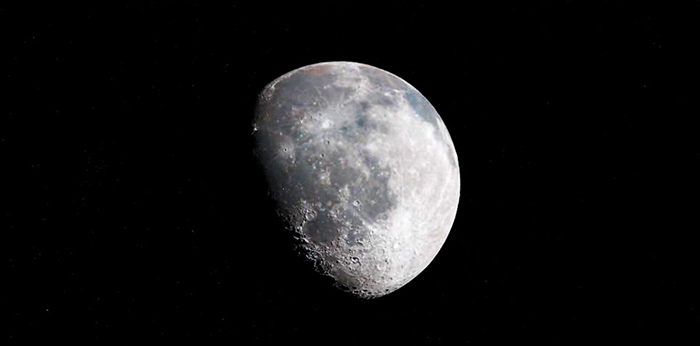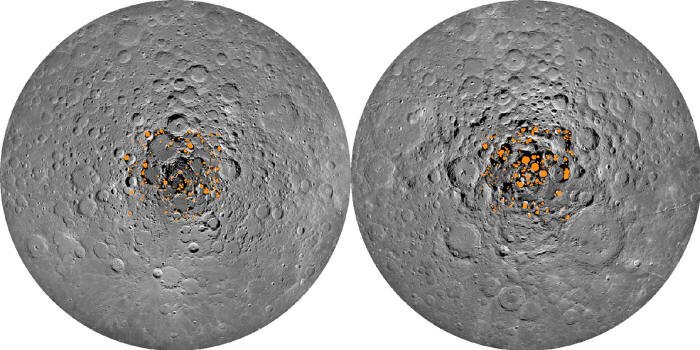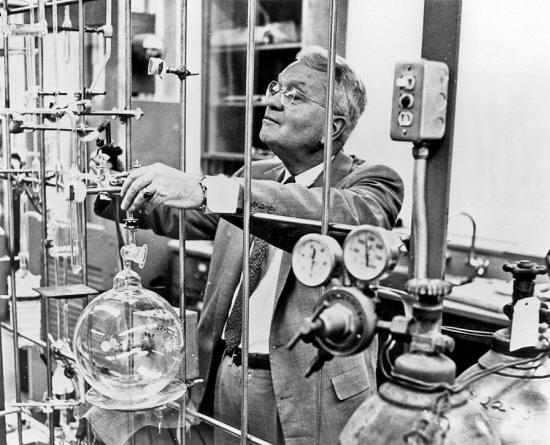|
by Jonathan
O'Callaghan from QuantaMagazine Website
The interior of Shackleton crater, visible at the end of the video,
never
sees sunlight.
the
IDIA Lab at Ball State University
Robots are about to venture into the sunless depths of lunar craters to investigate ancient water ice trapped there, while remote studies find hints about how water arrives on rocky worlds.
On October 9, 2009, a two-ton rocket smashed into the moon traveling at 9,000 kilometers per hour.
As it exploded in a
shower of dust and heated the lunar surface to hundreds of degrees,
the jet-black crater into which it plummeted, called
Cabeus, briefly
filled with light for the first time in billions of years.
NASA's Lunar Crater Observation and Sensing Satellite (LCROSS) mission aimed to see what would be kicked up from the lunar shadows by the impact. A spacecraft trailing the rocket flew through the dust plume to sample it, while NASA's Lunar Reconnaissance Orbiter observed from afar.
The results of the experiment were astonishing:
They had, for the first time, found water on the moon.
The moon isn't an obvious reservoir of water.
Its lack of atmosphere and extreme temperatures should cause any water to almost instantly evaporate.
Yet about 25 years ago, spacecraft began to detect signatures of hydrogen around the moon's poles, hinting that water might be trapped there as ice.
Scientists now think there's not just a bit of water ice on the moon:
Most of this ice resides in peculiar features at the moon's poles called permanently shadowed regions (PSRs).
These are craters like Cabeus into which the sun can't reach, because of the geometry of the moon's orbit.
PSRs are of immense interest to scientists.
Inside, temperatures can drop below minus 170 degrees Celsius.
This means ice on or below the lunar surface in PSRs won't necessarily melt.
Instead it might have survived there for billions of years. Studying the ice's chemical composition should reveal how it was delivered to the moon, in turn illuminating the origin of water on Earth, or indeed any rocky world around any star.
It could also be a resource for future human activities on the moon.
Thousands of permanently shadowed regions, shown in orange, lie in the vicinity of
the moon's north pole (left) and south pole.
Studies so far have provided a tantalizing glimpse at best.
But that's about to change...
Next year, robotic vehicles will enter the bewildering icy depths of PSRs for the first time, revealing what the interiors of these shadowed craters look like.
By the decade's end, NASA plans to send humans to explore in person.
On the eve of this new era of moon landings, a slew of fresh studies of PSRs have revealed that these shadowed regions are even stranger than scientists imagined.
What will we find lurking in the shadows?
Water, Water, Everywhere
Speculation about PSRs dates back to 1952, when the American chemist Harold Urey first hypothesized their existence on the moon.
He observed that, whereas Earth orbits the sun with its rotational axis tilted by 23.5 degrees, the moon orbits at a mere 1.5-degree tilt.
This means the sun's rays strike its poles nearly horizontally, and the rims of polar craters will block light from directly reaching their depths.
However, Urey believed that any ice in these sunless locations would have been "rapidly lost" because of the moon's lack of atmosphere.
won the 1934 Nobel Prize in Chemistry for discovering deuterium. He also worked on the Manhattan Project and did pioneering research on the origin of life, paleoclimatology,
and the
origin and properties of the moon.
Then in 1961, the geophysicist Kenneth Watson of Lawrence Berkeley National Laboratory theorized that ice could persist inside PSRs. Nightside temperatures on the moon were known to plunge to minus 150 degrees Celsius.
Watson and two colleagues argued that this meant ice would get trapped in the coldest places, despite the exposure to space.
Scientists debated the possibility of ice in PSRs until the early 1990s, when radar instruments detected signs of ice at the poles of Mercury, which was also thought to have permanently shadowed craters.
In 1994, using a radar instrument on NASA's Clementine spacecraft, scientists detected an enhanced signal over the moon's south pole that was consistent with the presence of water ice. The hunt was on.
In 1999, Jean-Luc Margot at Cornell University and colleagues pinpointed PSRs on the moon that could contain ice.
They used a radar dish in the Mojave Desert in California to make topographic maps of the lunar poles.
They located just a handful of PSRs, but subsequent studies have identified thousands.
The largest measure tens of kilometers across inside giant craters, such as Shackleton crater at the lunar south pole, which is twice as deep as the Grand Canyon. The smallest span mere centimeters.
At the Lunar and Planetary Science Conference held in Houston in March, Caitlin Ahrens, a planetary scientist at NASA's Goddard Space Flight Center, presented research suggesting that some PSRs may grow and shrink slightly as temperatures on the moon fluctuate.
Patrick O'Brien and a colleague recently identified double-shadowed regions on the moon
that are cold enough to keep exotic ices frozen.
New research indicates that some craters also contain double-shadowed regions, or "shadows within shadows," said Patrick O'Brien, a graduate student at the University of Arizona, who presented evidence for the idea in Houston.
While PSRs don't experience direct sunlight, most receive some reflected light bouncing off the crater's rim, and this can melt ice.
Double-shadowed regions are secondary craters inside PSRs that don't get reflected light.
Icy Secrets
The double-shadowed regions are cold enough to freeze more exotic ices, like carbon dioxide and nitrogen, should any exist there.
Scientists say the chemical composition of these and of the water ice inside PSRs could reveal how water got to the moon - and, more importantly, to Earth, and to rocky worlds in general.
The question is, she said,
Whereas Earth's past has been scrambled by geological processes, the moon is a museum of the solar system's history; its ice is thought to have remained mostly untouched since its arrival.
There are three predominant theories about how water got to the moon.
The first is that it arrived via asteroid or comet impacts. In this scenario, when the solar system formed, water molecules in the hot inner solar system were vaporized and blown away by the solar wind; only water in the frigid outskirts could condense and accumulate into icy bodies.
These bodies subsequently bombarded the inner solar system, including the moon, delivering water.
The second theory is that volcanic eruptions on the moon sometime in its middle age formed a thin, temporary lunar atmosphere that engendered ice formation at the poles. Or solar wind could have transported hydrogen to the moon that mixed with oxygen to form ice.
In February, a re-analysis of the LCROSS plume published in Nature Communications indicated that the ice in Cabeus crater is most likely of cometary origin.
Analyzing the amount of nitrogen, sulfur and carbon frozen into the ice along with water, Kathleen Mandt of the Johns Hopkins University Applied Physics Laboratory and colleagues found that,
If the moon's ice was delivered exclusively by comets, the same might have been true for Earth.
That could mean rocky worlds must experience such impacts to accumulate the water necessary for life to flourish.
However, Landis says it's too early to say whether Mandt's research holds true for all ice on the moon.
The planetary scientist Kathleen Mandt's recent study of water vapor kicked up from a lunar crater suggests that a comet
delivered the water to the moon.
If some lunar ice is determined to be of volcanic origin, this would suggest worlds hold an innate ability to generate water from their interiors rather than relying on impacts.
Aside from looking for exotic ice in PSRs, scientists also want to measure the water ice's proportion of deuterium, a heavier isotope of hydrogen.
Substantial deuterium is more consistent with what's found in comets (although rates vary), whereas less of it would point to solar wind. A volcanic origin would fall somewhere in the middle.
Other elements will be informative, too; for instance, ice originating from volcanoes should contain abundant sulfur drawn up from the lunar interior, said Paul Hayne, a planetary scientist at the University of Colorado, Boulder.
Into the Abyss
No previous foray to the moon has ventured into its permanent shadows; the Apollo landings took place near the moon's equator at a time when knowledge of PSRs was in its infancy.
In 2019, China's Chang'e-4 lander and rover touched down at the south pole, but it did not target PSRs.
In 2017, however, President Trump signed a directive to NASA to return humans to the moon, an initiative later named Artemis.
Ahead of the first crewed Artemis landings in the mid-2020s, which may include the first sorties into the moon's permanently shadowed craters, NASA is paying commercial companies to conduct initial robotic exploration.
Houston-based Intuitive Machines will be the first of these companies to explore a PSR, albeit briefly.
Their Nova-C lander, scheduled to launch by the end of this year on a SpaceX rocket, will touch down on a ridge near Shackleton crater, a possible target for subsequent human exploration.
The lander will then deploy a suitcase-size vehicle called the Micro-Nova Hopper.
Intuitive Machines revealed details of the excursion at the Lunar and Planetary Science Conference: The Hopper will use thrusters to jump across the lunar surface, up to hundreds of meters at a time; in three hops, it will reach the edge of the 100-meter-wide Marston crater, which contains a PSR.
Then the Hopper will fire itself above Marston and descend into the pitch-black depths.
The lander has cameras and lights, but it's unclear what it will see. Sheets of surface ice are possible, said Robinson, the mission's lead scientist, but he says it's more likely that the vehicle's lights will reflect off ice crystals mixed in with the lunar soil.
Or if there's minimal ice on the surface, it may not definitively show up in images at all. Whatever the case, the view will be historic.
The Hopper's dip into Marston will last no more than 45 minutes, and the scientific return will be limited - the primary goal is simply to demonstrate that the hopping approach works.
But we won't have long to wait for a more thorough dive into the lunar abyss.
Drilling Down
This summer, the inaugural launch of NASA's new Space Launch System rocket (which will propel Artemis missions to the moon) will carry several small spacecraft that will study PSRs from lunar orbit.
A Korean orbiter launching in August, meanwhile, will carry ShadowCam, a purpose-built NASA instrument designed to image PSRs.
The defining moment in robotic PSR exploration, however, will come in late 2023, when a golf cart-size rover called VIPER (Volatiles Investigating Polar Exploration Rover) will head to the moon on a SpaceX Falcon Heavy rocket.
Upon exiting its landing vehicle, VIPER will drive into three of the moon's permanently shadowed regions and drill into the ground.
Operating for up to 10 hours at a time before exiting to recharge its solar-powered batteries, the rover will drill up to a meter deep for subsurface ice, or dig into any exposed ice on the surface.
The team expects to perform up to 50 drilling sessions.
Engineers tested a model of the VIPER rover at NASA's Glenn Research Center
in Cleveland, Ohio, in 2020. Alcyon Technical Services
VIPER will "revolutionize" our knowledge of these regions, said Landis.
It will use spectrometers to analyze any ice that's found, revealing the ratio of deuterium to hydrogen and looking for hints of carbon dioxide or nitrogen.
VIPER may provide conclusive insight into where the moon's ice comes from, and the general conditions under which ice might be found on rocky bodies.
Drops to Drink
The scientific advances will come on the coattails of a different project. If ice is accessible on or near the surface in PSRs, NASA hopes that astronauts could use it as either drinking water or fuel.
NASA is currently planning for the first crewed Artemis landing in 2025 to touch down near a PSR so that the astronauts can see for themselves how viable such an idea might be.
He added,
Various proposals for how to extract and utilize water ice are under development, said Kevin Cannon, a space resource expert at Colorado School of Mines.
Concentrated sunlight or an oven would then be used to extract the water from the excavated lunar soil.
Another idea is to,
Confirmation that there is indeed accessible ice on the moon could come by the start of next year, with the first images from inside a permanently shadowed lunar crater.
By the end of 2023 we may know for sure how it got there.
|







